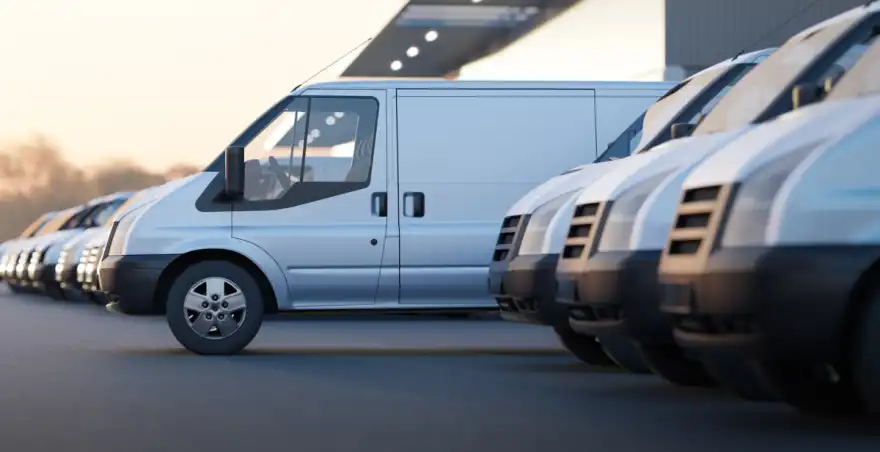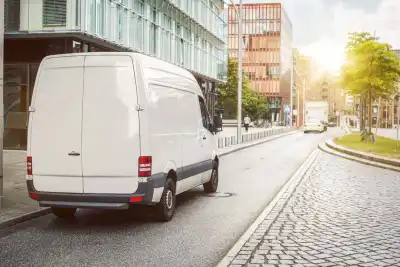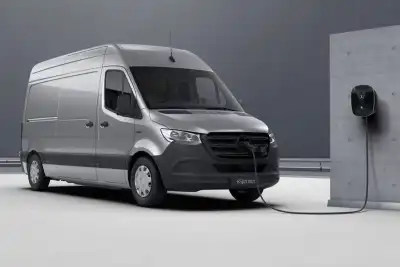
Navigating through the myriad of terms used to describe van features and specifications can be quite confusing. Save yourself the trouble by exploring our comprehensive list of common van terms.
Beavertail Van
A beavertail van is a versatile vehicle designed for efficient transportation, featuring a rear flap that doubles as a ramp. This unique design allows easy loading and unloading of various cargo, especially small vehicles and garden machinery. The term "beavertail" originates from the distinctive appearance of the folded-down ramps, resembling the tail of a beaver.
Box Van
A box van is a type of enclosed commercial vehicle characterised by its square or rectangular cargo compartment. This versatile transportation vehicle typically has a straightforward, box-shaped structure, providing a secure and enclosed space for the efficient carriage of goods.
Bulkhead
A bulkhead is used to create a barrier between the driver's cabin and the cargo area, providing safety and protection for the occupants from shifting loads during transportation.
Car-derived van
A car-derived van is a small commercial vehicle that is based on the chassis of a standard passenger car. It retains the appearance of a car but is adapted for cargo-carrying purposes, often featuring a modified rear section for transporting goods.
Converted van
A converted van is a vehicle that has been modified or altered from its original design to serve a specific purpose or function. These modifications can include changes to the interior layout, addition of specialised equipment, or transformation for a particular use, such as a camper van, mobile office, or customized transport vehicle.
Crew van
A crew van is a type of commercial vehicle designed to transport both cargo and a team of workers. It typically features a dual-purpose interior with a dedicated cargo space at the back and additional seating in the front for the transportation of a crew or work team.
Dropside van
A dropside van is a commercial vehicle with open sides on its cargo area that can be lowered or removed for easy loading and unloading of goods. The sides of the van's cargo bed are hinged and can be dropped down, providing convenient access to the cargo space.
Electric Van
An electric van is a type of commercial vehicle powered by electricity. Instead of a traditional internal combustion engine, it relies on electric motors and a rechargeable battery.
Flatbed
A straightforward flat loading deck, lacking side panels, is commonly employed in the construction sector. It is often equipped with a crane positioned either behind the cab or at the rear of the loading deck. These flat bed vans feature tie-down points or lashing bars, facilitating the secure fastening of items through the use of sheets and straps.
GTW (Gross Train Weight)
GTW, which stands for Gross Train Weight, is displayed on a vehicle's plate or sticker. It represents the combined weight of the Gross Vehicle Weight (GVW) and the weight of both the trailer and its load.
GVW (Gross Vehicle Weight)
GVW, or Gross Vehicle Weight, is also referred to as MAM (Maximum Authorised Mass). It signifies the total weight of a vehicle, inclusive of the maximum load it can carry. By considering both these weights, drivers can ensure safety compliance on specific roads.
Hybrid vans
Hybrid vans incorporate hybrid technology, which often involves a small petrol engine recharging a compact battery. Many of these vans can operate as fully electric vehicles for short distances.
Load Space
Load space pertains to the interior volume of a vehicle specifically designed for transporting goods. This measurement is typically expressed in litres or square meters.
Luton Van
A Luton van is a type of commercial vehicle characterised by an extended and enclosed overhang above the cab. This design provides additional vertical storage space, making Luton vans suitable for transporting large or tall items.
LWB, MWB, SWB (Long/Medium/Short Wheel Base)
The wheelbase of a vehicle is the measurement between the centre of the front and rear wheels. A Long Wheelbase (LWB) has the greatest distance, followed by Medium Wheelbase (MWB) and Short Wheelbase (SWB).
Minibus
Altered vans with seating configurations typically accommodating 9 to 17 people, resembling those employed in schools. These vehicles are typically built on the chassis of large or medium vans, offering more seating capacity than standard passenger vans.
Panel Van
Panel Vans, also known as blind vans, are compact cargo vehicles constructed on car chassis. Offering a smaller and more nimble alternative to truck-based chassis, they still provide sufficient space for transporting smaller loads.
Payload Capacity
The payload capacity of a van refers to the maximum weight that can be added to the load without compromising safety, excluding the empty weight of the vehicle.
Pick-up
A commercial vehicle featuring a cabin, a separate load area, and typically a four-wheel-drive drivetrain. Various configurations include single cabs, double cabs, or XL cabs with some rear storage inside the cabin where rear seats would typically be. Options for hard tops and roller covers are often available to ensure a secure and watertight load space.
Temperature controlled van (aka fridge van)
Refrigerated vans come in diverse sizes and configurations, serving the transportation needs of items ranging from online food orders to crucial medical supplies. These vans feature frozen, chilled, or ambient sections and can operate within a range of temperatures.
Tipper Van
Resembling a Dropside van, a tipper is a compact commercial vehicle with a flatbed cargo area situated behind the cab. The key distinction lies in the seating capacity—while a Dropside van accommodates six passengers (including the driver), a tipper van is more compact, offering space for only three occupants.



